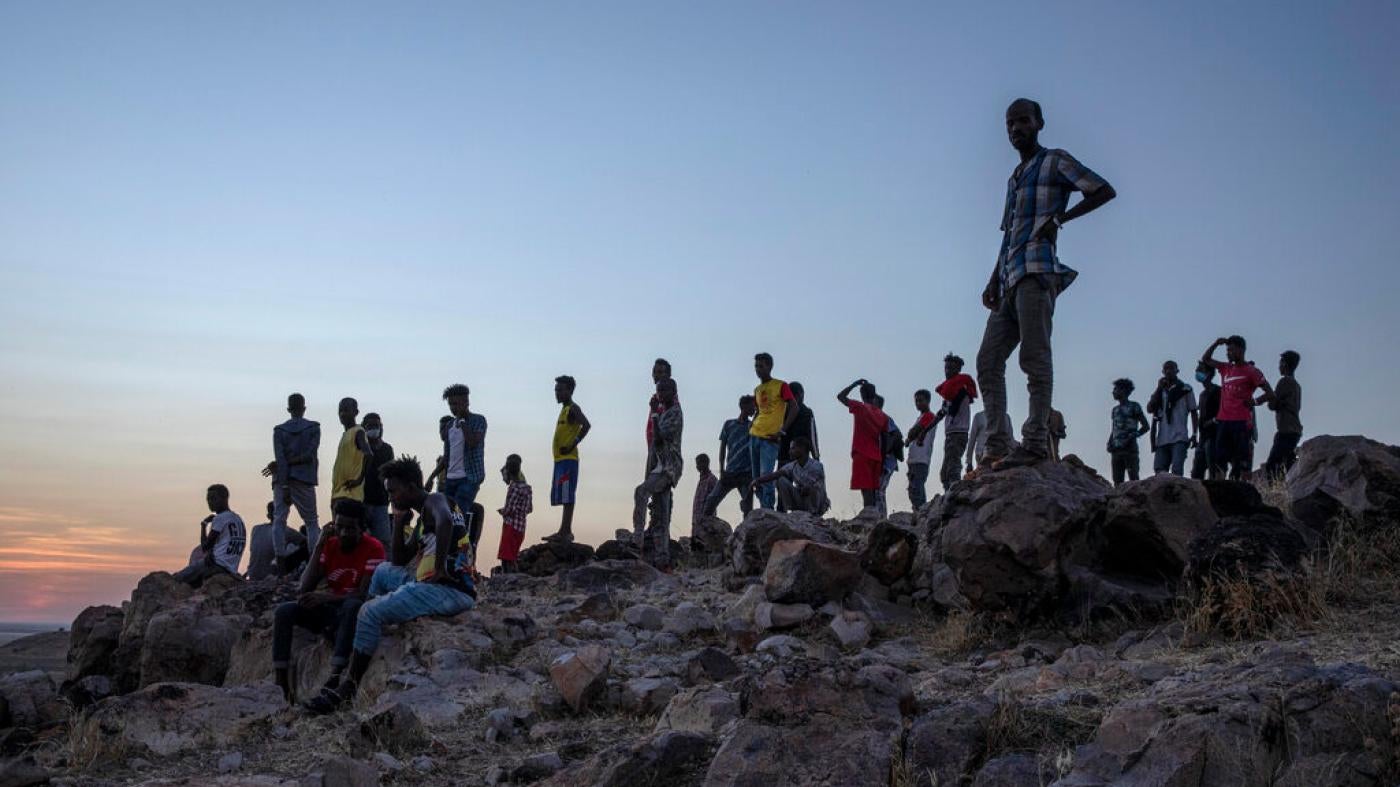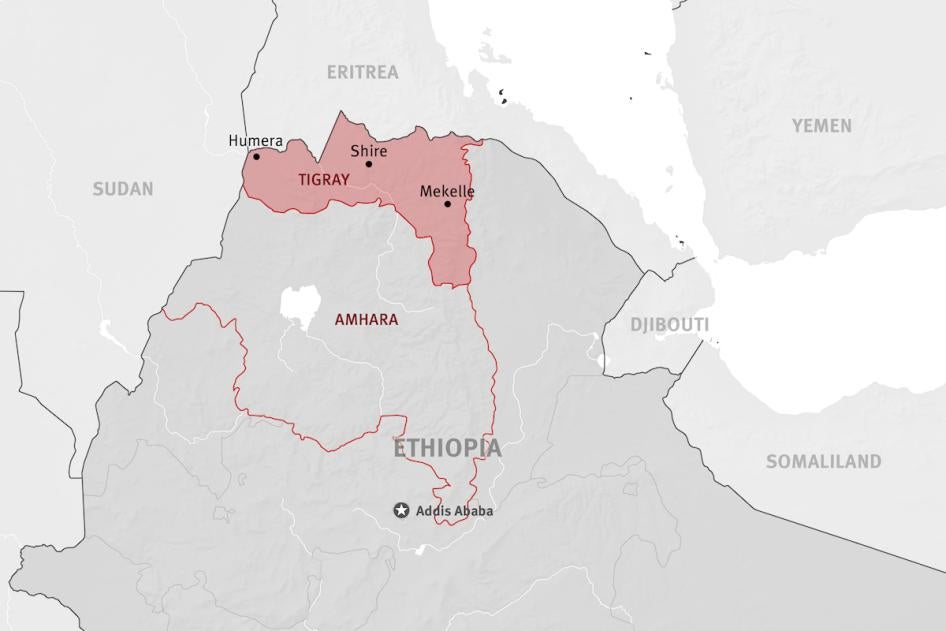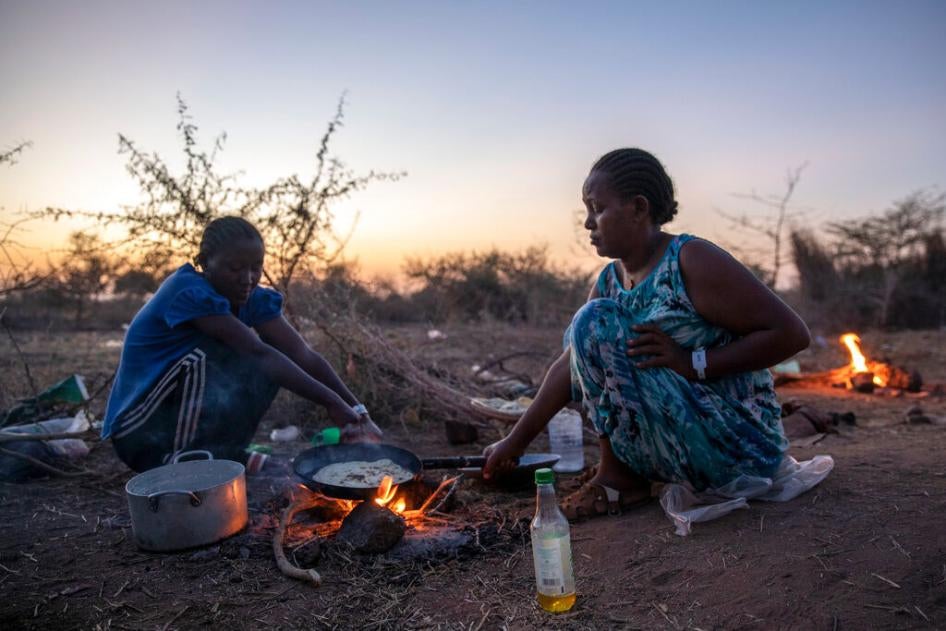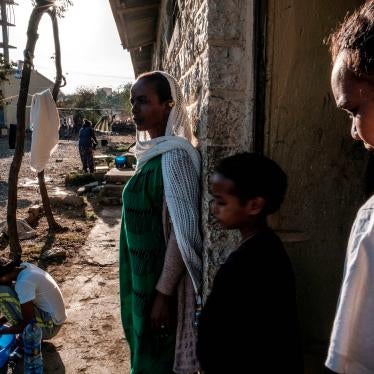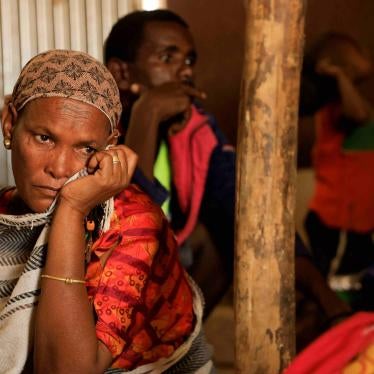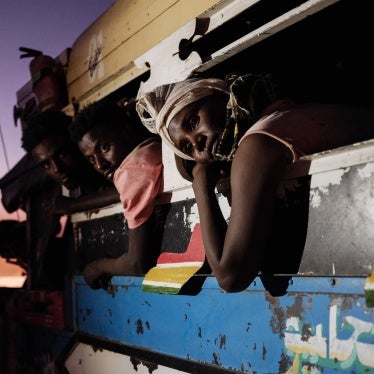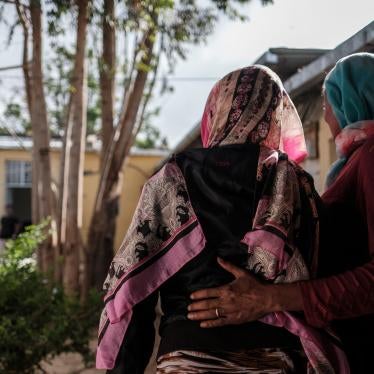What do we know about the situation in Tigray now?
June saw heavy fighting between Tigrayan and Ethiopian government forces, including Ethiopia’s allied forces from its Amhara region and neighboring Eritrea. On June 28, Tigrayan forces recaptured the regional capital, Mekelle, taking thousands of Ethiopian soldiers prisoner. That same day, the federal government withdrew from Tigray and declared a unilateral ceasefire, citing many reasons including to allow in essential aid.
Yet the government kept Tigray shut off after its declaration.
Since late June, Ethiopian authorities have blocked roads into the region, and access is sporadic. Even now, electricity and fuel supplies are rapidly dwindling, communications and banking have been shut down, and access to cash is severely limited, including for aid agencies operating in the region.
It’s important to underline that a ceasefire should not be necessary to ensure that warring parties allow the civilian population access to humanitarian aid, which is a basic requirement of the law of armed conflict.
Fighting continues. We have received reports of abuses in western Tigray, and last week we learned that fighting expanded to Ethiopia’s Afar region, bordering Tigray to the east, causing thousands to flee.
What abuses have you uncovered over the last eight months?
Early in the fighting, people in Tigray suffered indiscriminate bombing by Ethiopian government forces, killing scores and forcing thousands to flee to Sudan or elsewhere in Ethiopia. Over the following months, Ethiopia, Eritrea, and Amhara troops burned crops, occupied and looted homes, and committed extrajudicial killings. We’ve documented 10 days of horror in the historic town of Axum, where Ethiopian and Eritrean forces shelled the town, then conducted widespread pillaging of the town and health centers. Eritrean forces there responded to an ambush by massacring scores of residents in their homes and on the street, including children. In general, we’ve reported on summary executions, sexual violence, pillaging, arbitrary detention, and attacks on factories, schools, and hospitals.
Is humanitarian aid still not getting into Tigray today?
After nearly a month where flights into Tigray were halted, the Ethiopian government permitted humanitarian flights into the region on July 22, although the United Nations said their staff faced stringent, time-consuming checks.
Keep in mind that by early June, there were already 350,000 people facing starvation in Tigray. Four million people, 70 percent of the population, needed food aid. After the government’s unilateral ceasefire declaration, humanitarian workers said that roads, notably through the neighboring Amhara region, were blocked off. On July 1 a bridge you have to cross to enter central Tigray was destroyed and a convoy of 29 trucks carrying food aid was forced to turn back. One aid convoy made it into Tigray two weeks ago, but another was attacked ten days ago in the Afar region. Another convoy is currently blocked in Afar awaiting government clearance.
Humanitarian workers have been largely unable to bring in food and medical supplies. The UN World Food Program (WFP) warned earlier this week that their supplies in Tigray are within days of running out.
To make matters worse, humanitarian workers have been threatened and attacked. Since the conflict began, 12 aid workers have been killed, including three Médecins sans Frontières (Doctors without Borders) staff killed in late June. Ethiopian defense forces entered and raided UNICEF offices in late June, dismantling critical communication equipment. Warring parties, notably Eritrean government forces, have deliberately attacked and occupied medical facilities. Over the last three weeks, social media influencers have repeatedly made false online claims against aid workers, putting them at greater risk.
What happened to make food aid so essential in Tigray?
Ethiopian troops and their allies from Eritrea and the Amhara region have looted and burned crops, and attacked factories and infrastructure. This war started during harvesting season. We interviewed Tigrayans who fled to Sudan who reported that farming equipment and crops were burned and their harvest and livestock looted, notably by Amhara and Eritrean forces.
For months, people were also just too scared to move, given the risks they faced.
How are the Ethiopian federal government’s restrictions on communications hurting people?
As we speak, the phone lines are once again down in the region. The internet has been cut off since the beginning of the conflict. No phone service makes it difficult for people to receive key information, like which areas may be safe, or where to go if they need medical help.
People also can’t get information about family and friends. I recently spoke to a doctor who fled Tigray into Sudan. His wife had a baby a month ago and he still hasn’t been able to tell his family back home.
It also makes it incredibly difficult for humanitarian workers to help people, and to make decisions around security or to assess a community’s needs. And it hinders the ability of journalists and human rights groups like ours to collect information and report on unfolding abuses.
So how have you been doing research?
Whenever communication lines are restored, we speak with people in the region about what they’ve experienced. We’ve been able to confirm atrocities and witness accounts using forensic analysis and various open-source techniques, including satellite imagery and verification of video and photo materials.
What’s happening with the Eritrean refugees in Tigray?
Two weeks ago, we heard alarming reports that the two remaining camps for Eritrean refugees in Tigray were caught in the fighting between Tigrayan and Ethiopian government forces. The warring parties need to protect these vulnerable people, and the international community should be thinking about how to support and protect them as well.
Earlier in the conflict, two other refugee camps hosting roughly 20,000 Eritrean refugees were destroyed by Eritrean forces, the military from the country where they fled repression and persecution. Tigrayan militias also killed and sexually assaulted refugees in late 2020, in what appears to be unlawful revenge attacks because of abuses Eritrea’s forces committed in Tigray at the time, including massacres, widespread pillaging, and sexual violence.
There are numerous reports of sexual violence against women and girls. What kind of help are rape survivors able to get?
The UN reported more than 500 cases of gender-based violence in May alone, including against girls. Reports point to uniformed soldiers involved in rape and gang rape, in some cases holding women and girls captive for days. We assume many more survivors haven’t been counted given the challenges with stigma, communication, and finding help. The region only has one clinic providing comprehensive post-rape services.
Humanitarian organizations have reported that women are being sexually exploited in exchange for money for food. These incidents could grow as famine looms.
What’s happening to ethnic Tigrayans in Ethiopia outside of the Tigray region?
Since the conflict’s beginning, government security forces have harassed, profiled, dismissed from work, and arbitrarily arrested ethnic Tigrayans throughout Ethiopia. Many Tigrayans in Ethiopia’s capital, Addis Ababa, continue to face discrimination and arbitrary arrest. The government has held incommunicado journalists, political activists, and other people from all walks of life of Tigrayan descent, their loved ones don’t know how to locate them. Security forces and local officials have closed scores of Tigrayan businesses in the capital.
How has the fighting affected the rest of the country?
Events in Tigray have attracted a lot of attention because of the gravity of the crimes. But this isn’t happening in a vacuum. For several years we and others have been raising the alarm about a deteriorating human rights situation under Prime Minister Abiy Ahmed’s government in many parts of Ethiopia.
Over the past year alone, government security forces have engaged in abuses in the Oromia region, including widespread arbitrary arrest, extrajudicial and public executions, enforced disappearances, and harassment of people with perceived links to Oromo rebel groups. Violence along ethnic and communal lines has broken out in all 10 regions of Ethiopia, resulting in killings, displacement, and destruction of property. In the last days alone, there are reports of deadly violence along the Afar and Somali regional border.
The situation in Ethiopia had deteriorated in the lead-up to late June’s national elections, which many parts of the country didn’t participate in because of security issues and voting irregularities.
Events in Tigray are happening within a context in which the federal and regional governments have failed to tackle the country’s underlying problems. Structural problems and legitimate grievances have not been discussed or responded to, and there has been no credible justice for past government abuses and repression or more recent wrongs.
When Abiy became prime minister in 2018, there was widespread hope that the future could be brighter given promises of sweeping reforms. These haven’t materialized, and these hopes have been dashed for communities throughout the country.
What has been the international response to the Tigray situation?
The response by the United Nations and influential governments has been slow and mixed. Over the last few months, there’s been more concerted efforts by the United States, the European Union, and the United Kingdom about ensuring access to aid and calling for investigations into serious abuses. The African Commission on Human and Peoples’ Rights has established a commission of inquiry, which the African Union needs to support with financial, technical, and political assistance. The UN’s Office of the High Commissioner For Human Rights (OHCHR) is conducting a joint investigation with Ethiopia’s national human rights commission.
The UN Human Rights Council was very slow to react to the crisis, only putting Tigray on its agenda in mid-July. At the same time, the UN Security Council was in paralysis, discussing Ethiopia for months behind closed doors, with some member states saying the conflict was an “internal matter.” The first public Security Council meeting was not until June.
It’s critical that the key international bodies and governments move beyond condemnatory statements and adopt concrete action. They should push for credible, UN-led investigations, which could pave the way for the prosecution of those responsible for serious abuses. They should also impose individual sanctions on those responsible for violating international human rights and humanitarian law, and adopt an arms embargo.
*This interview has been edited and condensed
